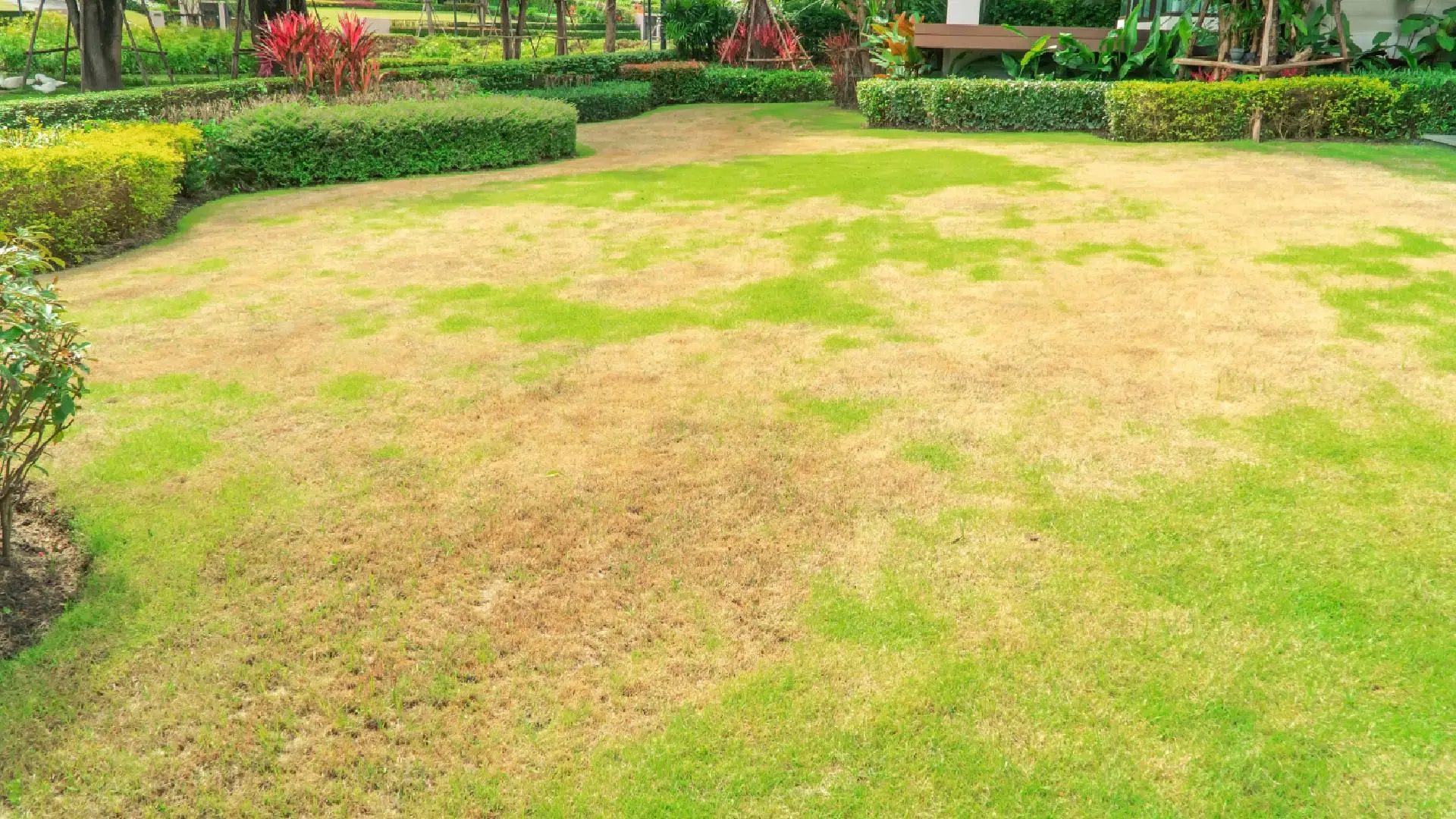poor drainage, shade and restrictive air circulation. An orange "firing” of the expanding outer ring indicates active infection while the inner patch appears most noticeably thin and sunken. Newly laid lawns may be more severely damaged than durable, established lawns.
Although the fungus does not kill the roots of zoysiagrass, it may take months for affected areas to recover even after treatment. And in the absence of any fungicidal remedy at all, the problem will escalate. Untreated zoysiagrass in the shade will eventually die out completely.
By contrast, fairy rings present as a dense green ring, are much larger (up to 15-feet in diameter),can disappear with changing environmental conditions, and are often accompanied by mushrooms.
Again, the best way to treat zoysia brown patch disease is to prevent it. Fungicidal applications are recommended twice annually by a professional.
Routine maintenance and professional treatments further advised include:
- Bag and remove clippings when mowing only if grass is very tall.
- Core-aerate the lawn annually only if compaction is detected and dogs or children regularly play outside.
- Do not mow when the grass is wet. Water deeply each week between 5 a.m. and 10 a.m.
- Provide good surface and subsurface water drainage to reduce humidity in the turf canopy.
- Prune trees and shrubs conservatively to improve light and airflow.
- Use a moderate amount of fertilizer. Too much or too little nitrogen will feed the disease.
- In early summer, zoysia should be resodded in bare areas. Or in shady areas, overseed with fescue.



Comments (0)
Thanks for your comment!
Thanks for your feedback! Your comments have been successfully submitted! Please note, all comments require admin approval prior to display.
Error submitting comment!
There is a problem with your comment, please see below and try again.